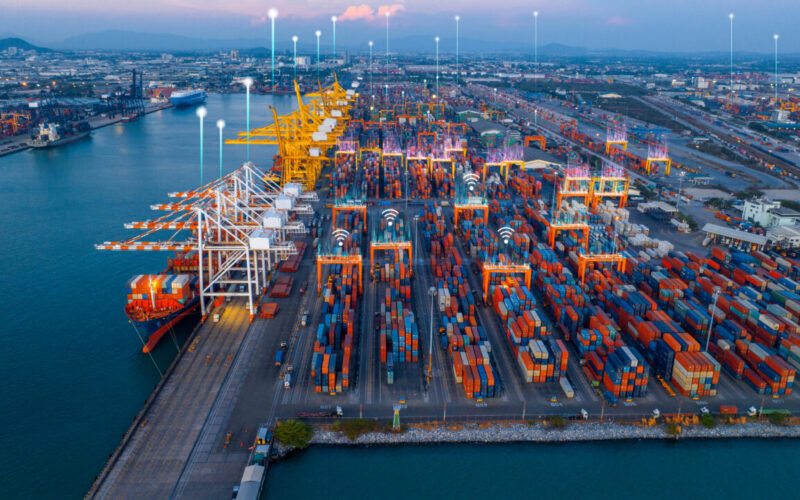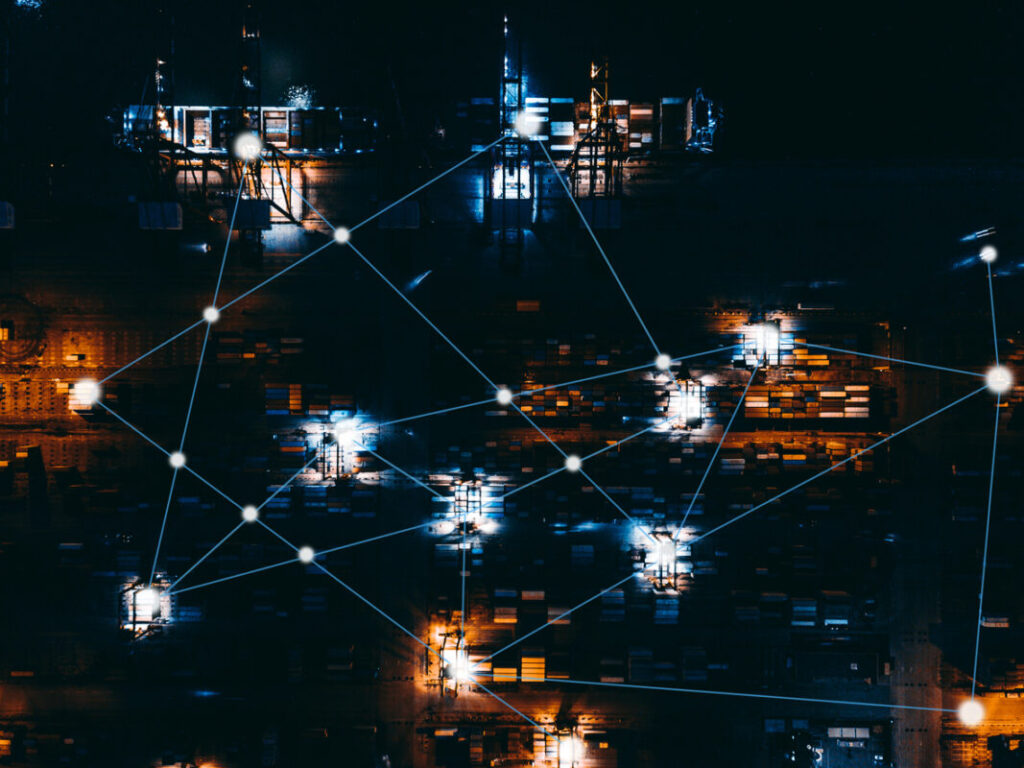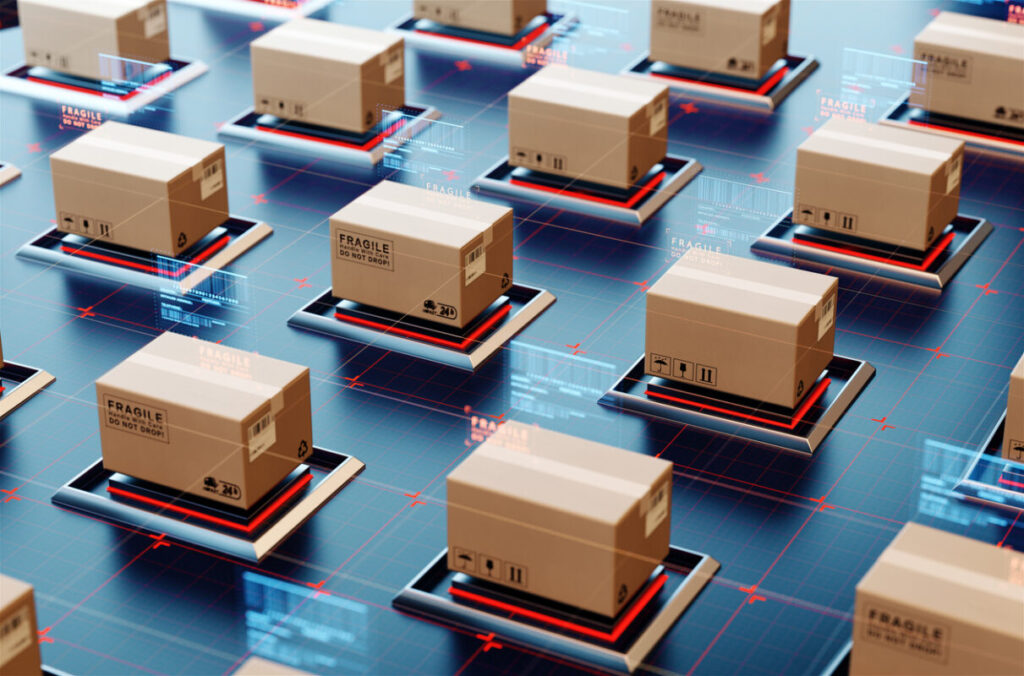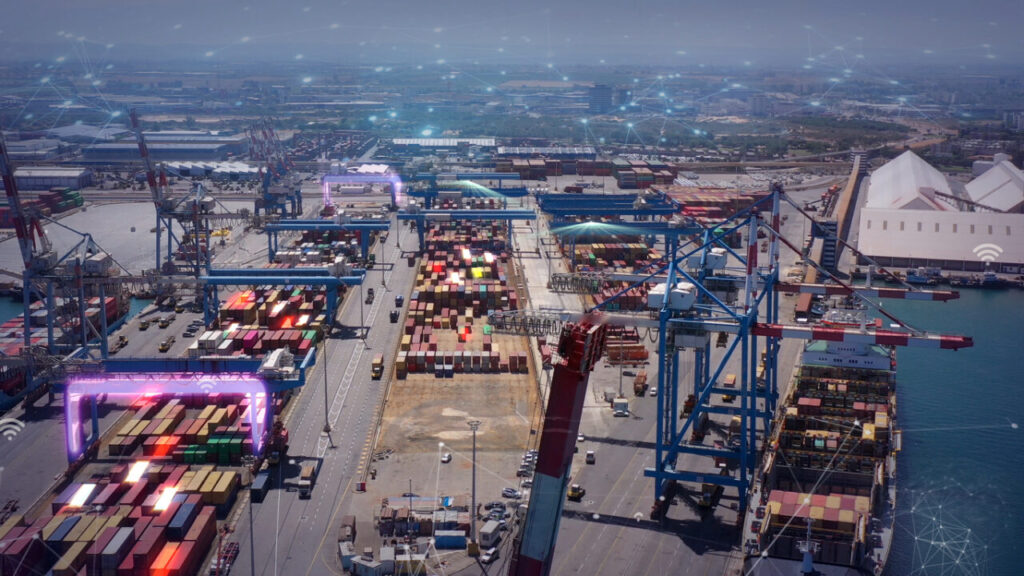A smart port is a modern and technologically advanced port that leverages innovative technologies and data-driven solutions to enhance its operational efficiency, safety and sustainability.
The shipping industry has been notorious for its resistance to change and its conservative approach when met with emerging technologies foreign to the regular practices of shipping operations.
Although the maritime industry has existed for centuries, it lags significantly behind newer industries like aviation in terms of automation and technological advancements.
However, there is now a promising new suite of innovations and smart interfaces infused with the capabilities of data science. Meticulously crafted to enhance and optimise port operations, these cutting-edge solutions incorporates the following key elements:
The current potential of technology and data-driven solutions brings a shift in perceptions toward technological change in the shipping world. This shift is marked by increased receptivity and favourability towards technological implementations, paving the way for a brighter, more interconnected future for the entire sector in the years ahead.
Amidst the current market conditions characterised by soaring globalisation and international trade, with ships growing larger and goods moving at an unprecedented pace, alongside unpredictable challenges brought on by geopolitical issues worldwide, it is now incumbent upon the industry to embrace progressive technological developments more so than ever before.
With this in mind, let’s take a look at the most prominent digital solutions that ports have been adopting worldwide.
Artificial Intelligence (AI):
Artificial Intelligence refers to computer systems that simulate human intelligence processes by employing various techniques including machine learning, natural language processing, robotics, and more. AI essentially aims to provide systems that can perform tasks and solve problems that would typically require human intelligence.
AI can automate repetitive tasks that would thus improve overall efficiency for whatever it is used for. Large amounts of data can also be processed and streamlined through AI algorithms to provide predictive analytics that can help determine future events like market trends. Another key benefit of AI is its ability to aid in decision-making by providing humans with insight and recommendations.
READ: How can ports use Artificial Intelligence?
These techniques can be implemented in the ports industry in a number of ways. Ports worldwide can optimise their entire shipping process, from order management to logistics and inventory management, through AI. For instance, AI can be employed to optimise fleet operations and management by providing more efficient shipping routes. It can do this by analysing GPS, weather, and traffic data. Moreover, AI can be used to develop autonomous ships that can navigate, dock, and make decisions on their own.
READ: Maritime Single Window: Embracing port call digitalisation
Internet of Things (IoT):
Implementing the Internet of Things enables ports to limit resources and human interference. IoT essentially refers to a network of interconnected devices, objects, and sensors that can collect and exchange data via the internet, thereby allowing these devices to communicate and share information with each other and make data-driven decisions without requiring human observation. This effectively eliminates the element of human error, thereby enabling ports to enhance operational efficiency, management, and particularly safety.
READ: Next-Generation Maritime Connectivity: Telecom26’s Private Networks and Cellular IoT Solutions
These benefits are greatly applicable to the shipping industry. For instance, ships can be installed with IoT sensors for ship monitoring and risk management. Here, the sensors can monitor several operational aspects including engine performance, fuel consumption, temperature, and hull integrity. The data retrieved can then be transmitted ashore, enabling shipping companies to monitor the condition of their fleet and perform predictive maintenance remotely. This can limit periods of downtime and monetary costs, and promotes sustainable practices.
IoT can also facilitate port management in order to improve efficiency and limit congestion and turnaround times for vessels. This is achieved through tracking the movement of ships, containers, along with other assets around the port area through IoT. Additionally, this enhances port security and curtails the risk of theft of cargo.
Digital Twin:
A Digital Twin is a virtual representation of an object, system, or process that leverages real-time data and advanced analytics to emulate the behaviours and characteristics of the original physical entity. This virtual approximation allows operators to monitor, test, and analyse the original physical entity to then optimise its performance. This form of technology has the potential to bring great benefits to the shipping industry.
READ: The Promise (and Peril) of Digital Twins for Ports
For example, curating a DT of a vessel or ship equipment enables shipping companies to gather data on various performance markers, such as engine performance, fuel consumption, equipment health, and so on. Shipping companies can thereby analyse this data to forecast, for instance, maintenance needs and repairs resulting in more efficient operational scheduling. In addition, data pertaining to fuel consumption patterns can help increase fuel efficiency, which could drive down cost savings and emissions released. DTs can also be applied to various elements in the supply chain, including ports, warehouses, and logistics processes, to simulate different scenarios that can lead to optimised supply chain operations.
For example, earlier this year, Tianjin Port Group and Huawei announced plans to collaborate on building a digital twin of the Port of Tianjin in China. The plan, which is divided into three parts, includes the construction of new automated terminals, upgrading of traditional terminals, and comprehensive digital transformation.
Blockchain:
Blockchain, a decentralised and distributed digital ledger technology, enables multiple parties across the supply chain to securely verify and record transactions. It is essentially a chain of blocks that are interconnected through cryptographic techniques. With regard to the shipping industry, blockchain can provide several benefits.
Blockchain provides transparent visibility into the movement of goods along the supply chain by providing real-time shipment tracking. In this way, manufacturers, suppliers, shippers, customers, and everyone with vested interests in cargo shipments can access and verify the data, limiting the occurrences of delays and disputes while minimising the potential for fraud. This security is further compounded by blockchain’s decentralised nature and cryptographic algorithms that add layers of protection from data tampering and unauthorised access, thereby safeguarding the integrity of the shipping process.
Blockchain can also provide smart contracts. Smart contracts are self-executing agreements with pre-set conditions; they can automate various processes in shipping, thereby minimising paperwork and human resources, for instance, the release of payment upon successful delivery of shipment. Through offering such a transparent overview of the supply chain, port operators are able to identify inefficiencies and bottlenecks, limiting factors of which can then be addressed to optimise and improve performance. This is also beneficial for the customer, who is better positioned to rely on smoother operations and secure shipments. It is worth noting, however, that the degree of benefits that can be derived from the implementation of blockchain is largely contingent upon the cooperation and standardisation across various stakeholders.
A prominent organisation at the forefront of blockchain implementation is the Global Shipping Business Network (GSBN).
5G:
5G, the fifth generation of wireless communication technology, is the latest and most advanced network infrastructure that provides enhanced data speed through operating on higher-frequency radio waves, capacity and reliability while limiting latency. 5G has thus proven to greatly benefit the shipping industry.
For instance, through greater data speeds, shipping companies are able to swiftly retrieve the real-time data needed for time-sensitive issues, such as the tracking of shipments and logistics data. Additionally, 5G’s increased capacity furthers the effective application of IoTs as shipping companies can reliably deploy a vast network of sensors and connected devices throughout their supply chain.
READ: Associated British Ports Builds the Port of the Future with Private 5G Network
Thus, both 5G and IoT work hand-in-hand in their efforts to optimise supply chains as improved decision-making is made possible by increased insight and visibility into inventory levels, shipping conditions, and delivery status while reducing shipment delays. In other words, not only does 5G improve shipping operations in and of itself, but it also provides a complimentary platform for the other digital solutions mentioned in this article to operate under the most conducive conditions.
Greater capacity and data speed also improves communications between vehicles and centralised systems, enabling real-time monitoring of fleets and optimisation of routes.
Terminal operators at Santos Port Brasil Terminal Portuário (BTP) have put great focus on 5G in their upcoming plans. In late 2022, the terminal operator partnered with telecommunications providers TIM and Nokia to implement a private 5G network at the port. The partnership provides for the sector’s first 5G private network on the Latin American continent, and will evolve into a definitive structure after the release of the 3.5GHz band for the city of Santos, scheduled by the regulator Anatel for 2023.













